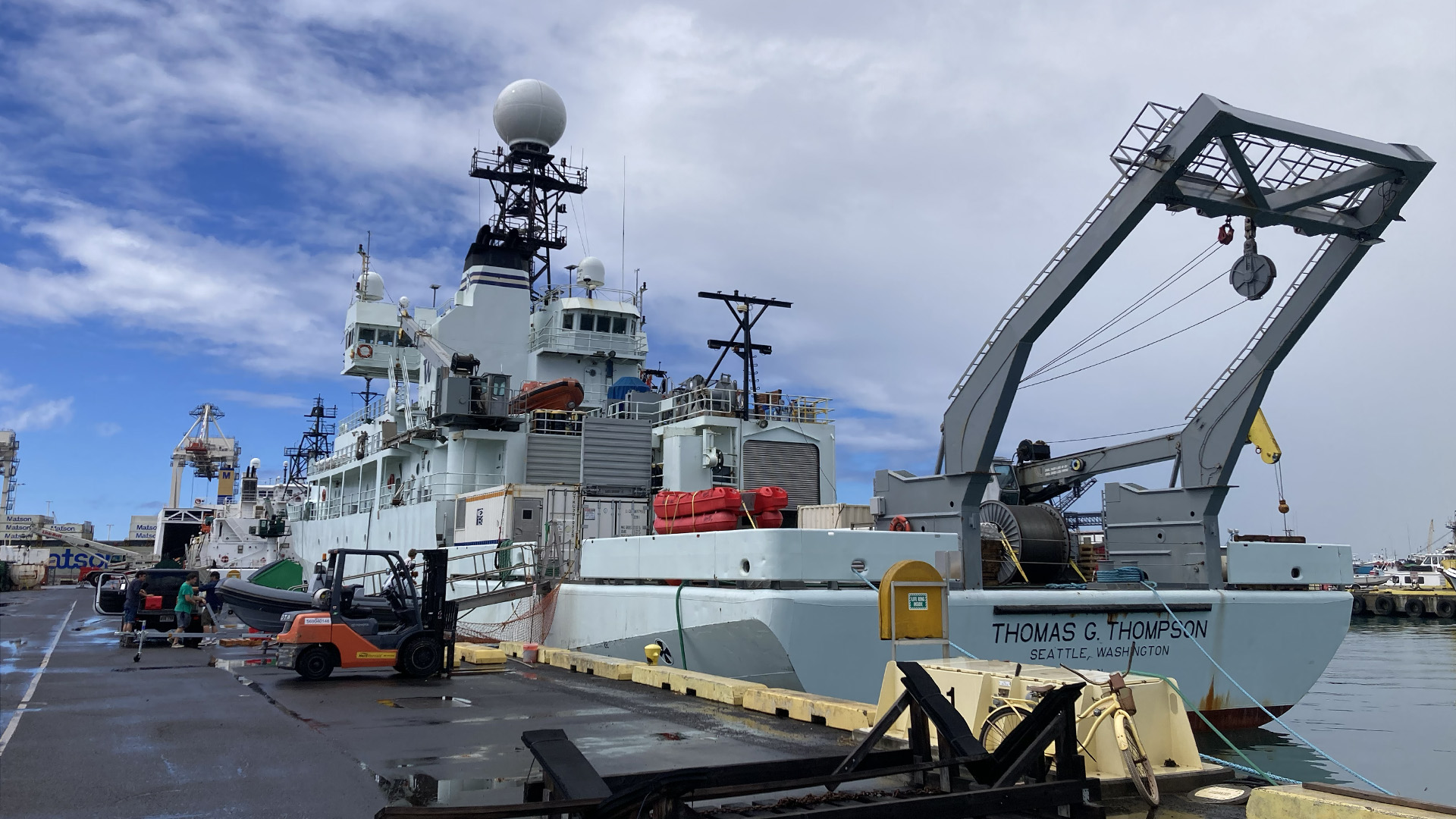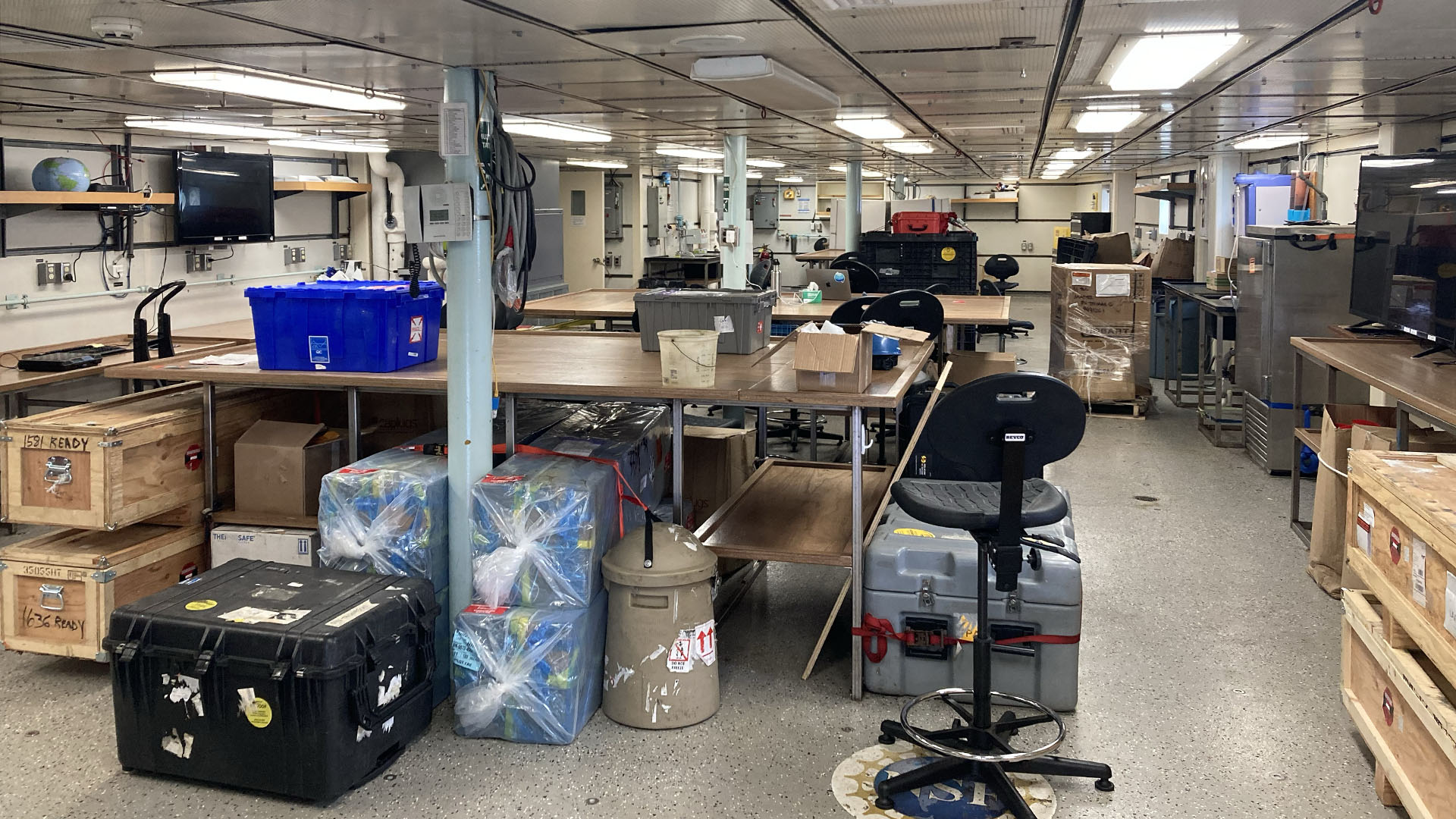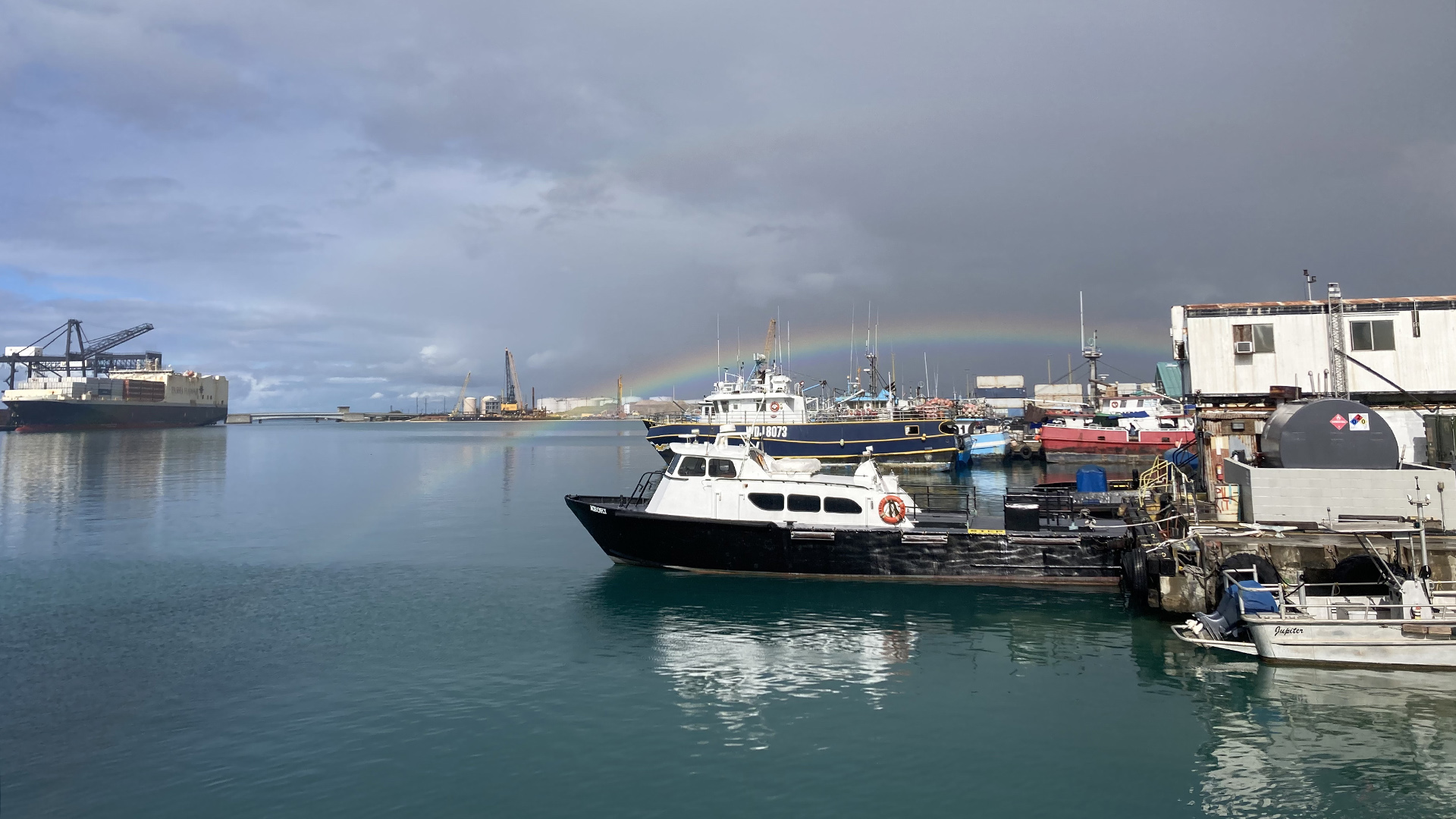Arrival in Honolulu and Heading Out
Our intrepid float deployer Cora arrives solo in Honolulu to board the R/V Thompson
Hello Argo enthusiasts! My name is Cora Hersh, and I’m a graduate student in the Massachusetts Institute of Technology/Woods Hole Oceanographic Institution (MIT/WHOI) Joint Program. I’m writing from the R/V Thomas G. Thompson, a 274-foot research vessel operated by the University of Washington. My job for the next approximately two weeks is to deploy ten Argo floats: four “core” floats (measuring temperature, salinity, and pressure) and six biogeochemical (BGC) floats (which measure the core variables as well as additional biogeochemical variables). I’ll also be taking some samples of the surface water at the locations of the BCG float deployments, so that Argo data teams can compare the floats’ measurements to independent data.
A typical science cruise is packed full of scientists working on a variety of projects, trying to fit as much data collection as possible into their precious and limited time on the ship. The cruise I’m on is a little unusual in that I am the one and only member of the scientific party. How did this happen? The Argo program often takes advantage of “ships of opportunity” to bring down costs and environmental impact, which means sending floats to ships that are already traveling through an area where additional Argo floats are needed. With the R/V Thompson’s last cruise disembarking in Oahu, Hawaii, and the next group of scientists scheduled to board in Guam, the Argo team saw a chance to deploy floats in the remote area of the ocean between these two islands. As someone who sits at a computer desk for work most of the time, I jumped at the chance to help out the Argo program and have a little adventure along the way! Although I’m the only scientist on board, the crew has been very friendly and welcoming so I don’t think I’ll be too lonely!
On Saturday, I took an 11-hour nonstop flight from Boston to Honolulu and headed straight to the ship, which was docked at the University of Hawaiʻi pier. The deck of the ship was bustling with crew members busy loading equipment and supplies. Extremely jet lagged, I dropped my luggage off in my room (with no other science party on board, I get a room to myself!), found some lunch nearby, then proceeded to take a “nap” that ended up being about four hours long.
On Sunday I sampled the impressive breakfast spread, courtesy of the ship’s stewards, and met some more of the crew. There are three marine technicians on board, who are the interface between the science party (again, just me) and the rest of the ship’s operations. Liz, Emmett, and Mack will be helping me out with float deployments and water sampling over the next two weeks (and with getting me back into my room when I lock myself out on the first day). I went through the various boxes of supplies and equipment for water sampling and float deployment that had been shipped to the R/V Thompson to make sure I had everything I needed. Once that was finished, I decided to do a little exploring in the city while I had the chance. The area near the ship turned out not to be the most pedestrian-friendly area of Hawaii but I still managed to find some last minute supplies, some bubble tea, a beach, and few souvenirs!
As I write this on Monday morning, we have just departed from Honolulu and are steaming out into the middle of the Pacific Ocean. A sun shower as we left the dock meant that a bright rainbow was visible over the harbor, an auspicious beginning. We have about a day and a half until our first float deployment, so stay tuned!



